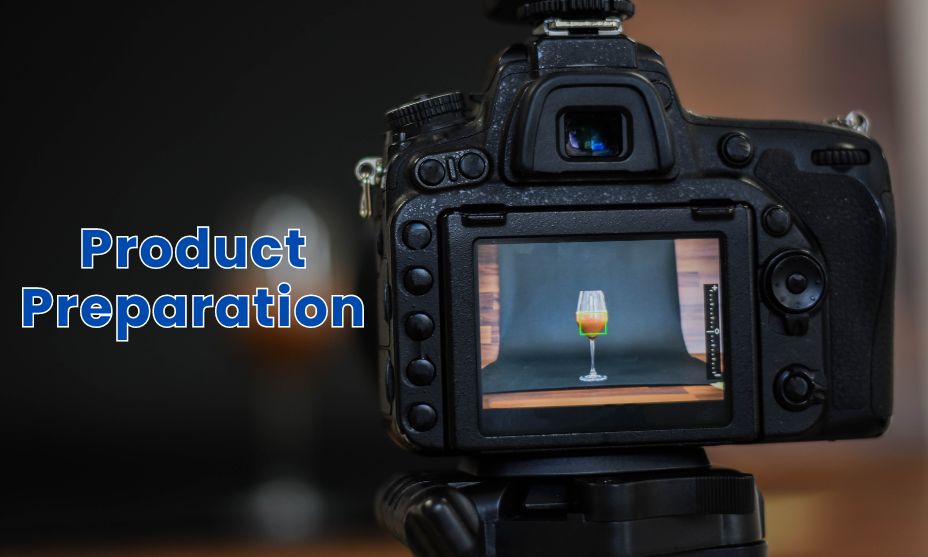Product Images – Top Strategies For Capturing Great Photos

Product images play a vital role in bringing sales and revenue to your brand by attracting more and more customers. It is often said pictures can speak better than words. While the content and descriptions are also important, you must focus on capturing top-standard images of your items and products. Thus, users can have a more ergonomic view of them, resulting in an ultimate rise in the customer base. Whether working on an online store or in-house, this approach guarantees immense benefits. We have developed this guide on top strategies you can opt for to capture great photos.
Why Capturing Great Product Images is Important?
In this highly competitive world, businesses are facing tremendous challenges to excel in their field and generate enough sales to take their revenue to an advanced level. Consequently, traditional approaches are not working anymore. Therefore, you must go out of the box to reach more people and streamline all the critical processes for more ergonomic results. In today’s world, people are more inclined toward purchasing products through online stores and social media. We all know social platforms require images to attract an audience. So, you must capture compelling photos of your products that will influence the purchase decision of visitors and make them more biased toward you.
Top Strategies for Capturing Great Product Images
In the under-section, we have elaborated on some top strategies for capturing brilliant product images uniquely and engagingly.
1 – Invest in Quality Equipment

Investing in high-quality equipment forms the foundation of capturing great product images. You must explore the market because numerous products from top brands are available, leading to more ergonomic pictures. Generally, they feature a professional-grade camera and lens that can provide exceptional results.
Some considerations are there that must be followed to get the suitable gadget and avoid breaking the bank. The top ones are in the following section.
- Instead of a professional camera, you can opt for a smartphone with a quality lens and processing speed to avoid capturing and editing photos.
- With a camera, you must consider buying a tripod stand that can take your capturing experience to an advanced level.
- Additionally, you should look for a remote shutter release for hands-free shooting.
2 – Understanding Lighting
Lighting is the most crucial aspect in capturing product images, and you must intensely focus on this factor. It is necessary to place the products in areas where their attributes are apparent. Furthermore, light can dramatically impact the final image. Here are some of the top lightning considerations; you must fulfill them for better outcomes.
a. Natural Light
Natural light is the best solution to all your lighting issues while capturing product images. It provides soft and diffused illumination, making your products appear more appealing. Therefore, you must place your products near a larger window. Also, you can place them outdoors to ensure every ray of natural light falls on the product.
b. Studio Lighting
Studio lighting allows you complete control over lighting in a more customized way, enabling you to bring more personalization into your product images. You can access multiple options, like softboxes, diffusers, and reflectors, to achieve even and controlled lighting. In addition, you can perform experiments with different angles and intensities to determine which will work best according to your products.
c. Avoid Harsh Shadows
Harsh shadows are the most critical problem when capturing product images. They can distract from your product, resulting in poor photos. You can use diffusers or bounce light off reflectors. It not only minimizes the shadows but also creates a well-lit and balanced image.
3 – Choosing the Right Background
Next, you must choose a background that complements your product’s appearance without overpowering it. In this way, you will be able to display your product images more engagingly and excitingly. We have elaborated on some background options to consider in the following section.
a. Solid Colors
Solid colors are the most popular choice as they allow your products to take center stage while having a plain area in your background. However, you must be very critical about choosing the color. Picking the white, black, and neutral tones works well with most products. Moreover, you can like the top background to contrast with your product’s appearance.
b. Textures and Props
Textures are not very much recommended because they may cause confusion with product design. However, some simply designed gadgets can easily accommodate textured backgrounds to make product images look more stunning and captivating. Consequently, you can generate appealing pictures that certainly boost your sales and, ultimately, revenue.
c. Transparent Backgrounds
Product images with transparent backgrounds are required, especially when they are subjected to be uploaded on various platforms. You can use a white background or glassy textures to prevent object reflections. Hence, you can allow easy integration into different settings.
4 – Composition Techniques
Composition techniques are the following strategic approach you must opt for to create your product images visually more stunning and appealing. However, it is a complex process, and you must work precisely to reach all the desired outcomes. Some top techniques are elaborated on in the following section.
a. Rule of Thirds
Firstly, you must divide your picture frame into a grid of 3 x 3. Then, place your item at the intersection of these lines, creating a balanced and visually pleasing composition. As a result, you can balance your product images and make them visually more attractive.
b. Leading Lines
Another effective method of improving your product image quality is by using leading lines such as diagonal or curved placement. It not only guide viewer’s eye but also build their interest in your items.
5 – Proper Camera Settings
Most people don’t know much about the camera settings of their equipment. Thus, they cannot be able to capture high-quality images. You must understand all the camera features and determine their usage for more ergonomic advantages. The following section will describe proper camera settings.
a. Aperture
The aperture of the camera is utilized to control the depth of field. A lower f-stop creates a light depth. Moreover, it blurs the background and focuses on the product to optimize its visibility in the image. On the other hand, a higher f-stop is required to keep the image in focus.
b. Shutter Speed
Shutter speed is essential, especially when you are shooting handheld. Therefore, you must choose it wisely as it can impact product images significantly. Besides, you can use a tripod for longer exposures as it avoids motion blur.
c. ISO
ISO is necessary when it comes to minimizing noise in your product images. Generally, it is the sensitivity to light. The higher the ISO, the more will be the brightness. That’s why you must increase it only to compensate for low-light conditions.
6 – Product Preparation

Preparing your products before the photoshoot is also an important strategy to improve your image-capturing experience. You can maintain the visual appearance of your items through the following ways.
a. Cleanliness
Firstly, choose the products you want to feature in the pictures; then, you must inspect and clean their property to avoid dust and remove rust. Additionally, you should use wet paper to remove fingerprints from glass items. It enables you to improve your product image’s appearance.
b. Styling
If you are capturing one or more products, styling is the best way of capturing your items and making them look more aesthetic. It can be done in numerous ways, such as by using props or other accessories. As a result, it improves the overall look of your products.
c. Consistency
Consistency is another technique to prepare your items for clicking pictures. You must ensure that your product images offer the same sort of experience on all the platforms integrated into your marketing campaigns.
7 – Post Processing and Editing
We described already that the product images are the best source of getting more sales by influencing the clients. Therefore, you must edit them according to the requirements of different platforms. Further, you must optimize them to improve their online visibility. We have provided complete details below.
a. Adjust Exposure
Adjusting exposure is critical to ensure your product is well-lit without overexposing its specific areas. In this way, you can improve the overall engagement ratio of your product images.
b. Color Correction
You must guarantee accurate color representation by adjusting the white balance and correcting color issues.
c. Retouching
Image retouching helps you remove imperfections from your product images. It mainly involves removing spots, wrinkles, and backgrounds.
Final Verdicts
Capturing great product images requires combining technical skills and creativity. You must invest in quality equipment, and understand lighting alongside mastering composition techniques to create stunning product photos that grab your audience’s attention. However, it is crucial to maintain consistency in your images when designing them to use on different platforms. In addition, you can optimize them to improve their online visibility. With these strategies in mind, your product images can help drive sales and build a strong brand identity.




